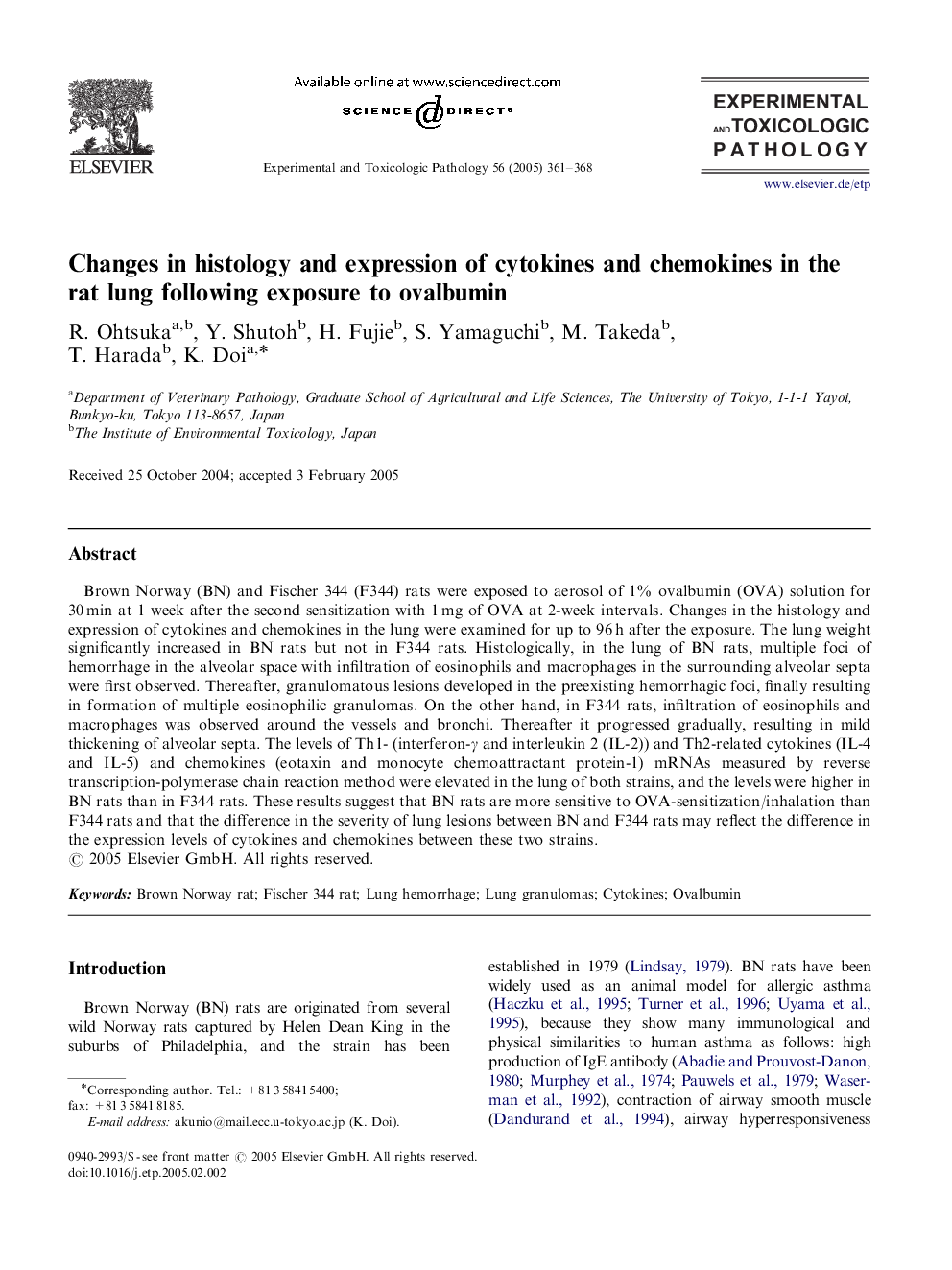| Article ID | Journal | Published Year | Pages | File Type |
|---|---|---|---|---|
| 9000627 | Experimental and Toxicologic Pathology | 2005 | 8 Pages |
Abstract
Brown Norway (BN) and Fischer 344 (F344) rats were exposed to aerosol of 1% ovalbumin (OVA) solution for 30 min at 1 week after the second sensitization with 1 mg of OVA at 2-week intervals. Changes in the histology and expression of cytokines and chemokines in the lung were examined for up to 96 h after the exposure. The lung weight significantly increased in BN rats but not in F344 rats. Histologically, in the lung of BN rats, multiple foci of hemorrhage in the alveolar space with infiltration of eosinophils and macrophages in the surrounding alveolar septa were first observed. Thereafter, granulomatous lesions developed in the preexisting hemorrhagic foci, finally resulting in formation of multiple eosinophilic granulomas. On the other hand, in F344 rats, infiltration of eosinophils and macrophages was observed around the vessels and bronchi. Thereafter it progressed gradually, resulting in mild thickening of alveolar septa. The levels of Th1- (interferon-γ and interleukin 2 (IL-2)) and Th2-related cytokines (IL-4 and IL-5) and chemokines (eotaxin and monocyte chemoattractant protein-1) mRNAs measured by reverse transcription-polymerase chain reaction method were elevated in the lung of both strains, and the levels were higher in BN rats than in F344 rats. These results suggest that BN rats are more sensitive to OVA-sensitization/inhalation than F344 rats and that the difference in the severity of lung lesions between BN and F344 rats may reflect the difference in the expression levels of cytokines and chemokines between these two strains.
Related Topics
Life Sciences
Agricultural and Biological Sciences
Animal Science and Zoology
Authors
R. Ohtsuka, Y. Shutoh, H. Fujie, S. Yamaguchi, M. Takeda, T. Harada, K. Doi,
